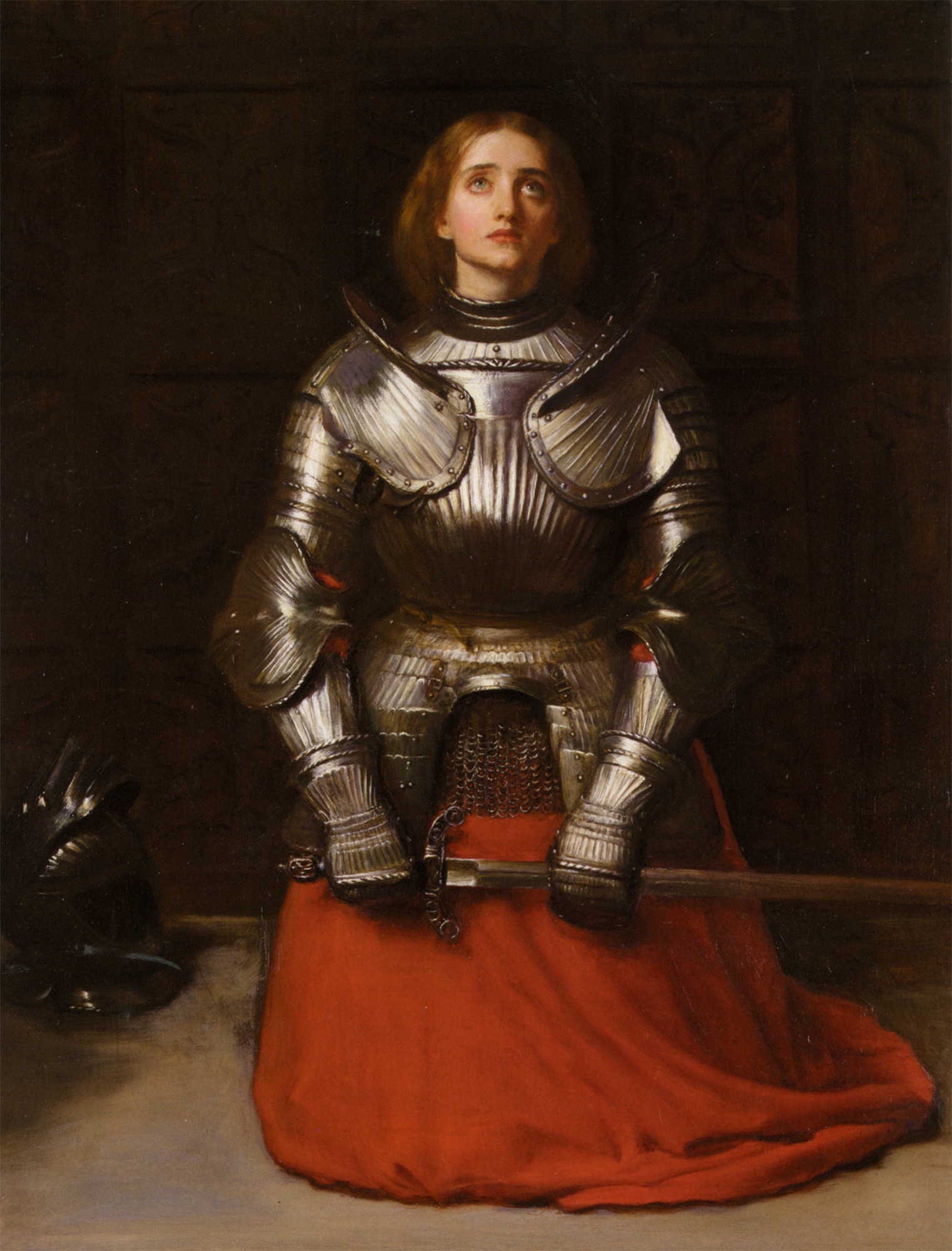Joan of Arc was born to pious parents of the French peasant class in Domremy. From an early age she was said to have heard the voices of St. Michael, St. Catherine and St. Margaret who later appeared to her when she was 13 years old. They had told her to drive the English from French territory.
Despite a sarcastic rejection by Robert de Baudricourt, the garrison commander, to visit the French Royal Court when she was 16, she later returned and left with the support of two of his soldiers. She stated to them that she must be at the King’s side for the Lord wills that she does so. When she met up with Baudicourt again and successfully predicted a military reversal at the Battle of Rouvary, he concluded she had seen it through Divine revelation, began to believe her words and was granted an escort to Chinon through hostile territory.
She met with King Charles VII and won his trust. She arrived at Orleans and quickly turned the Anglo-French conflict into a religious war. Out of fear of being thought of the works of the devil by the public, the King ordered a background check on her with a theological exam to verify her claims of which returned that she was of irreproachable life, a good Christian, possessing humility, honesty and simplicity and a favorable presumption on the divine nature of her mission.
Her test was to lift the siege of Orleans as she had predicted would happen. The French had failed at an offensive assault but after her arrival, things began to change.
During her presence, she claimed the army was always commanded by a nobleman and that she never killed anyone in battle as she preferred “forty times” over to carry her banner instead of a sword, but the noblemen stated she greatly effected their decisions since they accepted that she gave Divinely inspired advice.
She was injured on several occasions including a shot with an arrow between her neck and shoulder as she held her banner and a leg wound from a crossbow bolt but returned to the battle to encourage the soldiers. Prominent clergymen began to support her and Joan was able to persuade the King to allow her to march into other battles to reclaim cities, each of which ended in victory.
She was captured at Compiegne by the Burgundians, held for ransom, and after many unsuccessful escape or rescue attempts, was sold to the English and tried as a heretic and witch in an illegal process of the time. No evidence was found against her. Weighted jurors placed her in the worst of prisons where she fought off rape attacks.
She was condemned to die with burning at a pillar in 1431 while wearing a cross an English soldier had made and with two priests holding a crucifix before her as she had requested. Her body was burned an additional 2 times and thrown into the Seine River so no one could collect relics.
In 1455 the Pope authorized a retrial and Joan of Arc received a form appeal with a Declaration of Innocence in 1456. She was canonized in 1920.
She is the patron saint of soldiers and France.
Her feast day is May 30.
For God’s Glory.
